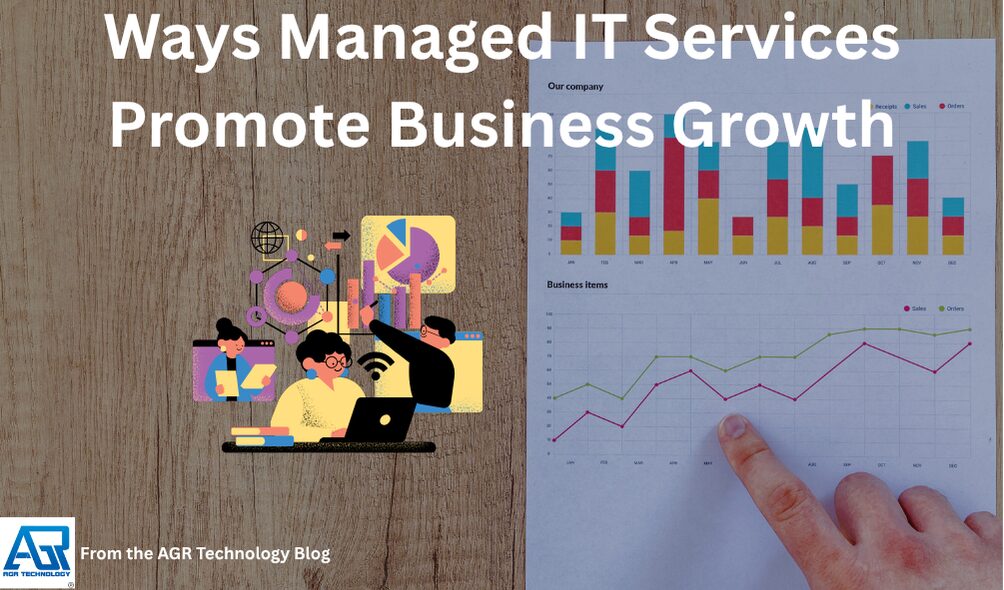When tech works, your team moves faster. When it doesn’t, everything stalls. We started AGR Technology to help growing organizations get reliable, secure, and cost‑predictable IT without the overhead of doing it all in‑house. On this page, we’ll show how managed IT services translate into real business growth, lower costs, higher uptime, stronger security, and faster innovation, plus what to look for in the right partner.
If you’re ready to cut noise and focus on outcomes, let’s talk. Book a quick consult and we’ll map the simplest way to improve your IT operations and ROI.
Lower Costs And Improve Financial Predictability

Shift From CapEx To OpEx For Better Cash Flow
Upfront hardware refreshes, surprise repairs, and ad‑hoc projects strain cash flow. With AGR Technology’s managed IT consulting services, you move to an OpEx model, predictable monthly fees tied to clear service levels. That steadies budgeting, reduces capital risk, and aligns spend to usage. We’ll also help you right‑time hardware refresh cycles so you don’t overbuy.
Right-Sizing, License Optimization, And Tool Consolidation
Most teams pay for unused seats or overlapping tools. We audit licensing across Microsoft 365, Google Workspace, security suites, and SaaS apps, then consolidate where practical. Right‑sizing endpoints, storage, and cloud instances (with FinOps practices) removes waste without hurting performance. Fewer tools means lower cost, simpler management, and fewer security gaps.
Preventing Downtime And Hidden Productivity Losses
Unplanned outages, slow logins, and flaky Wi‑Fi add up to real money. We use RMM (remote monitoring and management), endpoint management, and patch automation to prevent issues before they hit. The result: fewer tickets, faster resolution, and higher employee productivity. Avoid just one major outage and your managed IT services often pay for themselves.
Increase Uptime, Performance, And Reliability
Ongoing Monitoring, Proactive Maintenance, And Patch Hygiene
We watch your environment around the clock, servers, networks, endpoints, cloud workloads. Proactive maintenance, firmware and OS patching, and capacity planning keep systems healthy. We track early warning signals (disk errors, memory pressure, SSL expiry) to fix issues before users feel them.
Service-Level Agreements And Measurable Outcomes
You should know exactly what you’re paying for. We set SLAs for response and resolution times, uptime targets, and change windows. Monthly service reviews include metrics like MTTR, ticket trends, and endpoint compliance. When you can measure it, you can improve it, and hold us accountable.
Business Continuity And Disaster Recovery Readiness
Backups are not enough: restores must be tested. We design BCDR plans with defined RPO/RTO, immutable backups, off‑site replication, and regular recovery tests. Whether it’s ransomware, hardware failure, or a cloud outage, you have a clear playbook and the confidence that restores actually work. Ask us about a quick BCDR health check.
Strengthen Security And Reduce Risk
Managed Detection And Response With Continuous Hardening
Threats evolve daily. Our managed detection and response (MDR) combines EDR/SIEM telemetry, ongoing alerting, and incident response runbooks to cut dwell time. We apply secure baselines (aligned to NIST/CIS), enforce MFA and least privilege, and harden endpoints and identities on a regular cadence. Security isn’t a one‑off project: it’s a practice.
Compliance Alignment And Audit Support
If you face frameworks like ISO 27001, SOC 2, PCI DSS, or the ACSC Essential Eight, we map controls to your environment and close gaps pragmatically. Expect policy templates, evidence collection, log retention tuning, and audit‑ready documentation. We keep security real‑world and outcome‑focused, not checkbox theatre.
Employee Security Enablement And Access Governance
Humans are your first line. We deliver phishing simulations, role‑based training, and just‑in‑time access to reduce risk without slowing work. Identity and access management (IAM) with conditional access and device compliance raises the bar while keeping sign‑ins simple. Want a quick win? Start with SSO + MFA coverage across your core apps.
Scale And Innovate Faster
Cloud Migration, Optimization, And FinOps Discipline
Moving to Azure or AWS is step one: running it efficiently is the win. We plan migrations, right‑size resources, apply tagging and budgets, and set guardrails to avoid sprawl. With FinOps, you’ll see cost by team or product, forecast spend, and trim waste without hurting performance.
Modern Workplace And Remote Workforce Enablement
Hybrid work needs seamless, secure access. We standardize on Microsoft 365 / Office 365 or Google Workspace, enforce device compliance with MDM, and optimize collaboration tools like Teams and SharePoint. Users get fast onboarding, consistent profiles, and secure file access from anywhere, no drama.
Automation, DevOps Support, And Faster Time-To-Market
Release more, with fewer errors. We support CI/CD pipelines, infrastructure as code, and environment automation. Routine tasks, user provisioning, backups, patching, get automated so your engineers can focus on product. Shorter lead times, fewer incidents, faster feedback. That’s how IT becomes a growth lever.
Free Teams To Focus On Core Priorities
Offloading Routine Tickets, Backups, And Updates
Password resets, printer issues, software updates, necessary, but not strategic. We take the load off with ITIL‑aligned help desk, scheduled maintenance, and standardized builds. Your team spends time on revenue, customers, and product, not repetitive tasks.
Strategic vCIO Guidance And Roadmapping
Good IT follows a plan. Our vCIO service sets a roadmap tied to business goals: risk reduction targets, platform upgrades, lifecycle plans, and budget forecasts. We translate tech into outcomes the board understands.
Vendor Management And Technology Portfolio Rationalization
Too many tools? We manage vendors, negotiate renewals, and rationalize your stack. That means fewer contracts to track, better pricing, and a platform approach that’s easier to secure and support. Want us to carry the pager? Done. Prefer a co‑managed model? We’ll align to your team.
Choose And Measure The Right Managed IT Partner
Assess Fit, Scope, Security Posture, And Industry Expertise
Not all MSPs are equal. Ask about:
- Scope: endpoints, servers, cloud, network, security, compliance
- Coverage: business hours vs ongoing, onsite vs remote
- Security: MDR/EDR stack, incident response process, third‑party audits
- Industry experience: requirements for finance, healthcare, SaaS, manufacturing
Meet the people who will support you day‑to‑day. Tools matter, but expertise and process matter more.
Define Metrics That Tie To Business Outcomes
Set targets that the business feels:
- Uptime and performance baselines
- MTTR and first‑contact resolution
- Ticket volume per user and trend downwards
- Patch compliance and vulnerability remediation SLA
- BCDR test success rates
When metrics move, growth follows, fewer interruptions, happier users, and safer operations.
Transition Planning, Change Management, And Governance
Successful onboarding needs structure. We run discovery, document the environment, stabilize quick wins, then phase improvements. Clear change windows, approval workflows, and CAB reviews prevent disruption. Quarterly business reviews keep priorities aligned and the roadmap current.
Conclusion
Managed IT services should be simple: predictable costs, fewer incidents, stronger security, and faster delivery. That’s how AGR Technology helps teams grow without the headaches, through proactive monitoring, clear SLAs, disciplined security, and practical automation.
If you’re weighing build vs buy, let’s talk. Book a consult with our team, get a tailored plan, and see where you can save and improve in the next 90 days.
Prefer to start small? Ask for a health check: licensing, backups, and security posture. We’ll give you clear next steps and a actionable approach for your business
Frequently Asked Questions
How do managed IT services promote business growth?
Managed IT services reduce CapEx with predictable OpEx, right-size cloud and licenses to cut waste, and prevent outages with ongoing monitoring and patching. They strengthen security through MDR and compliance alignment, automate routine work, and provide vCIO roadmaps—freeing teams to focus on product and customers for faster, measurable growth.
What cost savings can an MSP deliver beyond lower hardware spend?
An MSP audits licenses (Microsoft 365, Google Workspace, security), consolidates overlapping tools, and right-sizes endpoints and cloud with FinOps, reducing waste without hurting performance. Proactive maintenance prevents costly downtime, and clear SLAs stabilize budgeting. Avoiding even one major outage can offset a significant portion of annual service fees.
How do managed IT services improve uptime and resilience?
They provide ongoing monitoring, proactive maintenance, and patch hygiene, with SLAs for response and resolution. Business continuity is built in through BCDR planning—defined RPO/RTO, immutable backups, off-site replication, and tested restores—so incidents like ransomware or hardware failures are recovered quickly, minimizing disruption and protecting revenue.
Should I choose co-managed or fully managed IT services?
Choose co-managed if you have an internal team that needs help with after-hours coverage, security expertise, or project surge capacity. Go fully managed when you want end-to-end support, strict SLAs, and predictable costs. Evaluate scope, security posture, compliance needs, and budget, and confirm day-to-day team fit before deciding.
What KPIs show ROI from managed IT services?
Track uptime, MTTR, first-contact resolution, and ticket volume per user. Measure patch compliance, vulnerability remediation SLAs, and BCDR test success. Include financials like cost per endpoint and cloud spend vs. forecast. Improving these metrics correlates with fewer interruptions, higher productivity, stronger security, and clearer, predictable IT spend.

Alessio Rigoli is the founder of AGR Technology and got his start working in the IT space originally in Education and then in the private sector helping businesses in various industries. Alessio maintains the blog and is interested in a number of different topics emerging and current such as Digital marketing, Software development, Cryptocurrency/Blockchain, Cyber security, Linux and more.
Alessio Rigoli, AGR Technology
![logo-new-23[1] logo-new-23[1]](https://agrtech.com.au/wp-content/uploads/elementor/thumbs/logo-new-231-qad2sqbr9f0wlvza81xod18hkirbk9apc0elfhpco4.png)
